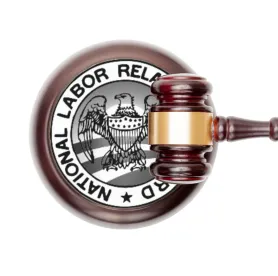The National Labor Relations Board (NLRB) has ruled that Browning-Ferris Industries is not a joint employer of employees of one of its contractors. Browning-Ferris Industries of California, Inc., 369 NLRB No. 139 (July 29, 2020) (B-F II).
The NLRB held that the Obama-era NLRB’s 2015 decision that overruled 30 years of NLRB precedent on the standard for determining whether two unrelated employers are the joint employers of one of those employer’s employees [Browning-Ferris Industries of California, Inc., 362 NLRB 1599 (2015) (B-F I)] should not have been applied to Browning-Ferris. The NLRB found “retroactive application … of the new joint-employer standard in this case would be manifestly unjust.”
Case History
This case has a long and complicated history that began in 2013. In general, in the early stages of B-F I, in connection with a union organizing drive, Browning-Ferris was found to be a joint employer of the employees of a contractor, Leadpoint. The union won the election. Because Browning-Ferris was a joint employer of the employees, the union’s victory meant the company had an obligation to bargain under the National Labor Relations Act (NLRA) with the union. When the joint-employer issue reached the NLRB, it announced the new standard, which was significantly more union-friendly than the old standard. For more on that standard, see Labor Board Sets New Standard for Determining Joint Employer Status.
B-F II was issued in connection with a “test-of-certification” proceeding, whereby an employer (here, Browning-Ferris) that believes the NLRB issued an incorrect decision may refuse to bargain with its employees’ union. Through a circuitous route, the appeal is presented to a U.S. Court of Appeals, which decides whether to enforce the NLRB’s decision. Here, the Court remanded the case to the NLRB to clarify certain issues raised by its new standard. The NLRB then issued B-F II.
Retroactivity
The NLRB maintains a presumption that its new decisions will be applied retroactively. However, the presumption does not apply “where retroactivity will have ill effects that outweigh the mischief of producing a result which is contrary to a statutory design or to legal and equitable principles.” In other words, the NLRB will apply a new rule “to the parties in the case in which the new rule is announced and to parties in other cases pending at the time so long as [retroactivity] does not work a manifest injustice.”
Further, the NLRB explained, with respect to “manifest injustice,” it “typically considers the reliance of the parties on preexisting law, the effect of retroactivity on accomplishment of the purposes of the Act, and any particular injustice arising from retroactive application.”
B-F II
Noting the previous standard had been in effect for at least 30 years and employers had relied upon it, the NLRB decided in B-F II the presumption was “significantly outweighed by its potential ill effects.” The current NLRB decided B-F I should not have been applied retroactively to find that Browning-Ferris was a joint employer of Leadpoint’s employees.
Accordingly, the NLRB amended the election result (Certification of Representative) and removed Browning-Ferris as a joint employer of Leadpoint’s employees.
On a side note, the decision was signed by NLRB Chairman John Ring and Member Marvin Kaplan. Member William Emanuel was a member of the panel, but did not participate in the decision on the merits, the NLRB noted. (Presumably, he participated in discussions about the case with Ring and Kaplan, but left final decision-making to them.) The NLRB did so because, without Member Emanuel as a member of the panel, the NLRB would not have had a quorum (three members) to decide the case. However, Member Emanuel could not participate in the decision on the merits because the NLRB’s Inspector General determined in 2018 that he had a conflict because his former firm represented Leadpoint prior to his becoming an NLRB member.
***
This decision does not affect the NLRB’s joint-employer rule, which was effective on April 28, 2020. That rule “reinstated and clarified the joint-employer standard in place prior to” B-F I. For more on the final rule, see Labor Board Issues Final Rule for Determining Joint-Employer Status.





 />i
/>i

